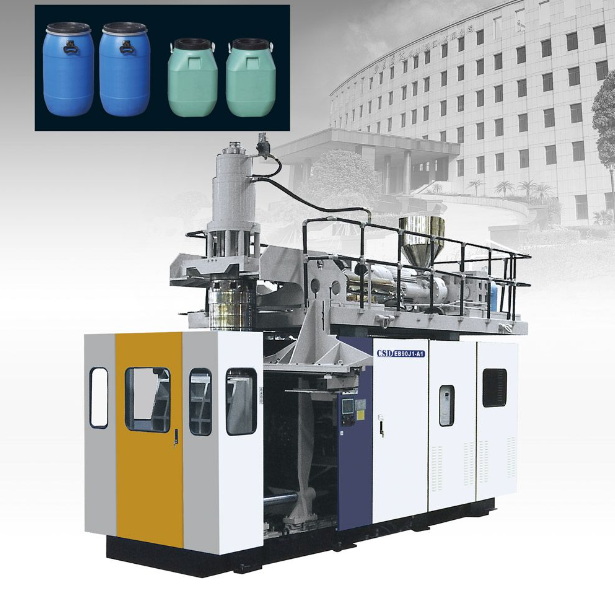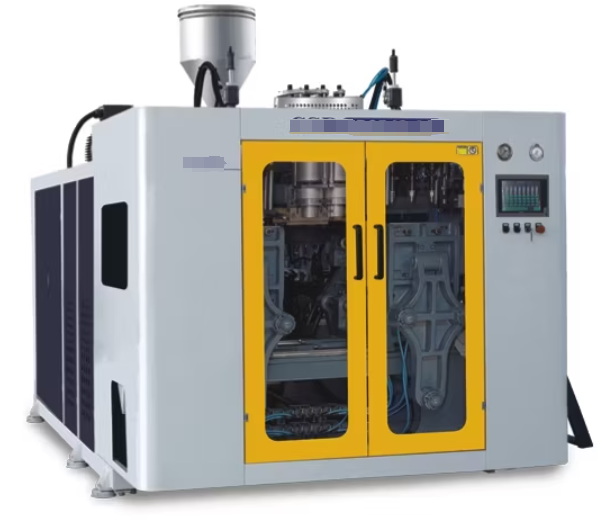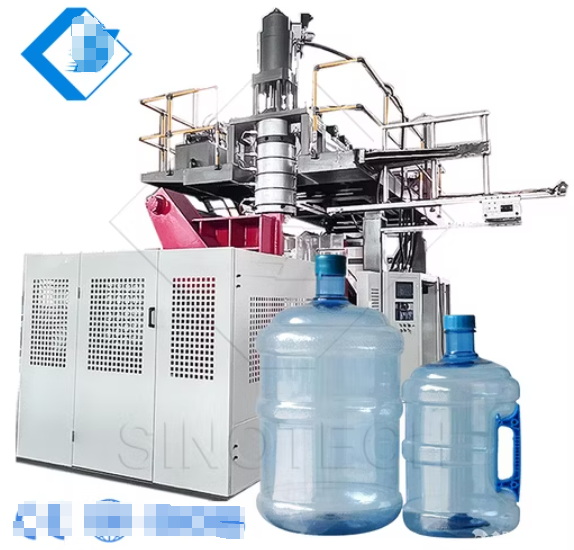Content Menu
● Introduction to Blow Molding Machines
>> Extrusion Blow Molding
● Automatic Extrusion Blow Molding Machines
>> Features of Automatic Machines
>> Applications
● Manual Blow Molding Machines
>> Features of Manual Machines
>> Applications
● Comparison of Automatic and Manual Machines
● Conclusion
● FAQs
>> 1. What are the main advantages of using an automatic extrusion blow molding machine?
>> 2. How does a manual blow molding machine operate?
>> 3. What types of products can be made using extrusion blow molding?
>> 4. What is the significance of CE certification in blow molding machines?
>> 5. How does the cost of automatic and manual blow molding machines compare?
● Citations:
In the realm of plastic manufacturing, blow molding machines play a crucial role in producing a wide range of products, from bottles and containers to complex automotive parts. Among these machines, automatic extrusion blow molding machines and manual models stand out due to their distinct operational modes and applications. This article delves into the differences between these two types of machines, exploring their features, advantages, and applications.

Introduction to Blow Molding Machines
Blow molding is a manufacturing process used to create hollow plastic products. It involves heating and shaping plastic material into a desired form using compressed air. There are several types of blow molding techniques, including extrusion blow molding, injection blow molding, and stretch blow molding. Each method has its unique advantages and is suited for different types of products.
Extrusion Blow Molding
Extrusion blow molding is one of the most common methods, where a plastic tube (parison) is extruded and then blown into a mold to form the desired shape. This process is widely used for producing bottles, containers, and other packaging materials.
Automatic Extrusion Blow Molding Machines
Automatic extrusion blow molding machines are designed for high efficiency and productivity. They are equipped with advanced features such as automated control systems, which allow for precise monitoring and adjustments during the production process.
Features of Automatic Machines
1. High Efficiency: These machines significantly reduce production time and increase output, making them ideal for large-scale manufacturing.
2. CE Certification: Many automatic machines, like the automatic extrusion blow molding machine with CE, adhere to European safety and environmental standards, ensuring compliance and reducing liabilities for manufacturers.
3. User-Friendly Interface: The intuitive controls enable operators to minimize training time and enhance productivity from the start.
4. Versatility: Automatic machines can produce a variety of products, from beverage bottles to industrial containers, by adapting to different mold sizes and shapes.
Applications
Automatic extrusion blow molding machines are widely used in industries such as:
- Beverage and Food Packaging: Producing lightweight yet robust containers.
- Automotive Manufacturing: Creating complex components for vehicle safety and efficiency.
- Medical Supplies: Manufacturing medical equipment and packaging.

Manual Blow Molding Machines
Manual blow molding machines require more human intervention compared to their automatic counterparts. They are suitable for smaller production volumes and offer flexibility in product design.
Features of Manual Machines
1. Cost-Effectiveness: Manual machines are generally less expensive to purchase and maintain.
2. Flexibility: They allow for quick changes in product design without significant retooling.
3. Skill Requirement: Operators need training to manage the machine effectively.
Applications
Manual machines are often used for:
- Small-Scale Production: Ideal for producing custom or specialty items.
- Prototyping: Useful for testing new product designs before scaling up production.
Comparison of Automatic and Manual Machines
| Feature | Automatic Extrusion Blow Molding Machines | Manual Blow Molding Machines |
| Efficiency | High efficiency, suitable for large-scale production | Lower efficiency, ideal for small-scale production |
| Cost | Higher initial cost | Lower initial cost |
| CE Certification | Often certified, ensuring safety and compliance | May not be certified |
| Skill Requirement | Less skill required due to automation | Requires skilled operators |
| Product Variety | Can produce a wide range of products with ease | More limited in product variety |
Conclusion
In conclusion, the choice between an automatic extrusion blow molding machine with CE and a manual model depends on the scale of production, budget, and specific product requirements. Automatic machines offer high efficiency and compliance with international standards, making them suitable for large-scale manufacturing. Manual machines, on the other hand, provide flexibility and cost-effectiveness, ideal for smaller production runs or prototyping.

FAQs
1. What are the main advantages of using an automatic extrusion blow molding machine?
The main advantages include high efficiency, reduced labor costs, and compliance with safety standards like CE certification. These machines are ideal for large-scale production due to their ability to produce a wide range of products quickly and consistently.
2. How does a manual blow molding machine operate?
A manual blow molding machine operates by manually feeding plastic resin into the extruder, where it is melted and formed into a parison. The operator then blows air into the parison to shape it into the desired form. This process requires more skill and manual intervention compared to automatic machines.
3. What types of products can be made using extrusion blow molding?
Extrusion blow molding can produce a variety of products, including bottles, containers, fuel tanks, and automotive parts. The process is versatile and can be adapted for different industries such as food packaging, medical supplies, and industrial manufacturing.
4. What is the significance of CE certification in blow molding machines?
CE certification ensures that the machine meets European safety and environmental standards. This certification is crucial for manufacturers as it reduces liabilities and ensures compliance with international regulations, making the products more marketable globally.
5. How does the cost of automatic and manual blow molding machines compare?
Automatic blow molding machines generally have a higher initial cost compared to manual machines. However, they offer long-term benefits such as increased productivity and reduced labor costs, which can offset the initial investment over time.
Citations:
[1] https://www.moldingmachinetepai.com/productstags/ce-blow-molding-machine.html
[2] https://gsblowing.com/double-station-blow-molding-machine/
[3] https://www.wangbrand.com/en/faq_02.htm
[4] https://www.tech-long.com/a-how-does-a-manual-blow-molding-machine-work.html
[5] https://www.mywaymachine.com/pp-pe-extrusion-blow-molding-machine-basics-and-configuration/
[6] https://www.bottleblow.com/info/the-advantages-and-differences-of-automatic-an-58303205.html
[7] https://www.dreamstime.com/photos-images/blow-molding-machine.html
[8] https://www.youtube.com/watch?v=TH298Taoyfo
[9] https://www.indiamart.com/proddetail/extrusion-blow-moulding-machine-22242619762.html
[10] https://www.automaticblowmouldingmachine.com/sale-13998814-extrusion-blow-moulding-machine-with-ce-certification-for-multiple-layer-200l-drums.html
[11] https://www.bottleblow.com/info/advantages-and-disadvantages-of-automatic-blow-47389737.html
[12] https://www.youtube.com/watch?v=3NE5G0teU8M
[13] https://cnyaoshi.en.made-in-china.com/product/PdBtCIErYfaq/China-Manual-Pet-Bottle-Blowing-Machine.html






















